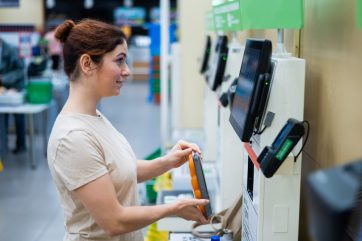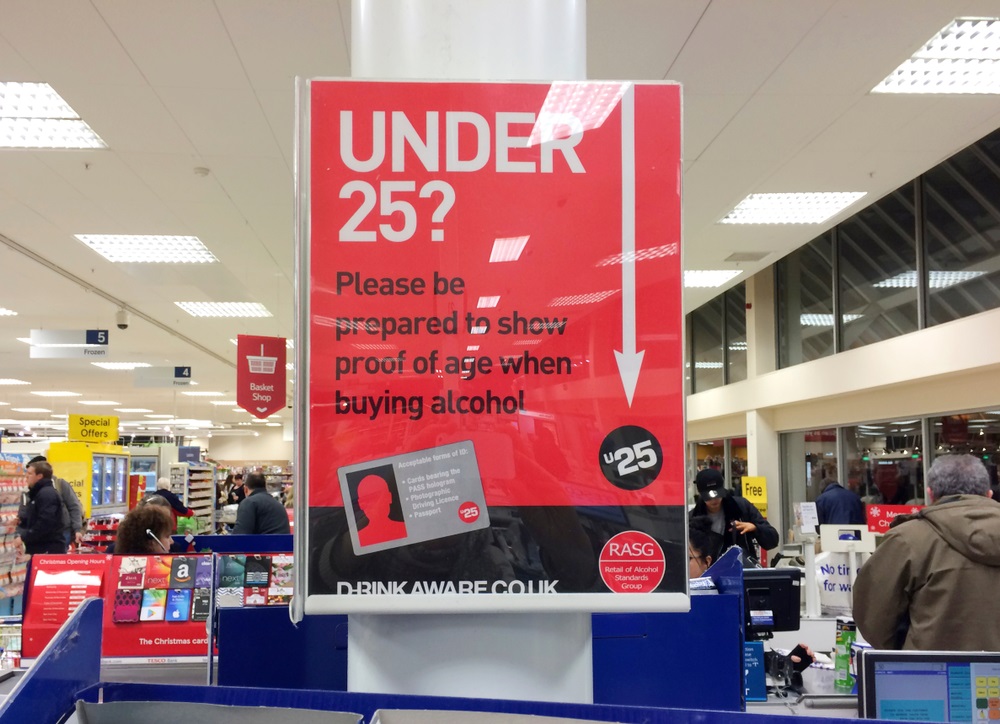
It’s checkout time at the shops, you’re there with your favourite tipple – but the worker who needs to confirm your age has mysteriously disappeared. With the British public consuming some 1.7 billion bottles of wine in 2020 alone, it’s a problem many of us will have faced, especially now that supermarkets host 51% more self-checkout machines than they did five years ago.
But what if a would-be drinker could simply look into a camera, and have their age automatically checked by an algorithm? That’s the promise behind the age recognition technology delivered by Yoti, a London software company that’s already conducted millions of checks for age-restricted services online.
As Yoti’s CEO outlined in a recent letter to the Secretary of State for Science, Innovation and Technology, however, stress-free checkouts can’t come overnight. As hinted by the target of Robin Tombs’s letter, one issue is the law. Passed before machine learning really existed, current UK legislation puts limits on how age recognition technology can be used.
Combined with stakeholder concerns, an automated future suddenly feels less imminent – even if the technology’s vast social and technological benefits surely mean it’ll appear on high streets eventually.

Age recognition 101
Like other examples in the wider AI space, Yoti’s age recognition technology is centred around data. Taking millions of pictures of faces, anonymised save for the month and year of birth, the pattern of the face is then converted into numbers.
From there, via the power of pattern analysis, an algorithm can calculate the approximate age of any person who looks into a Yoti camera, including newcomers eager for cigarettes or beer.
Not, to be clear, that the system can pinpoint birthdays exactly – nor does it need to. “If I’m a liquor salesman,” explains Sean O’Neill of Gartner in a US context, “I need to make sure that you’re over 21. I don’t really need to know your exact age.”
Given these parameters, what Tombs calls his “facial age estimation” platform seems to work well. In 2022, to give one example, a Home Office trial saw the technology deployed across several UK supermarkets, accompanied by a second Yoti product centred around digital ID for edge cases. Of the 98,000 age checks conducted during the test, not a single underage drinker circumvented the rules. The trial wasn’t perfect. According to a government post-mortem, while the uptake of age estimation technology suggests there is “appetite” for the automation of ID checks, the trial showed that the system was still sensitive to environmental factors like bright light “that could impact on reliability.”
If, as Tombs argues, the trial showcased “really positive” evidence of the robustness of age verification technology, there are surely more practical benefits to such systems. Quite apart from making the shopping process smoother – especially when age verification accounts for up to 50% of interventions at self-checkouts – taking physical workers out of the equation arguably makes it safer.
As O’Neill points out, a full 5% of the physical abuse faced by store employees is sparked by age verification disputes, even as assaults against staff in England and Wales jumped by half in 2022-23.

Legislative challenges
Once you factor in the ability of age estimation technology to leave workers to concentrate on more productive tasks, it’s no wonder the sector is thriving. This is clear far beyond Yoti, with work by The Insight Partners finding that the global identity verification market could hit nearly $32bn by 2030.
Yet given this frantic activity, why isn’t this technology widespread across British shops right now? Read Tombs’s letter to Peter Kyle MP, and you’ll quickly get your answer. One challenge, it soon becomes clear, is legal.
According to the Licensing Act 2003, a ‘responsible person’ must approve the sale of alcohol, an obvious problem for computerised solutions like Yoti’s. Other rules, from 2014, oblige buyers to hold proof of age with a holographic or ultraviolet security feature.
“For the moment,” Tombs says, “that effectively rules out the use of a digital ID on a smartphone, or using your face” – even though, in practice, schemes like Challenge 25 mean staff habitually make educated guesses about how old someone looks.
For Tombs, the reason for this disconnect is simple: technology has outpaced the technocrats. “We had our first discussion with the Home Office in 2016 about reusable digital ID,” he says. “We weren’t discussing facial age estimation at that point – because we hadn’t innovated that solution.”
Now that age recognition technology has matured, of course, Parliament can hopefully catch up, and certainly references in the King’s Speech to a new Digital Information and Smart Data Bill could presage the tweaks Yoti wants.
Not that Tombs and his team are necessarily destined to have things their own way. Aside from Labour’s ambivalence towards ambitious new tech, another hurdle comes from public perceptions. “Everybody’s afraid of Big Brother,” is how O’Neill vividly puts it, with Yoti lamenting the occasional confusion between their anonymised platform and throughgoing facial recognition in the totalitarian style.
Yoti is doing its best to assuage concerns. For one thing, any images its cameras take are swiftly deleted. For another, pictures remain locally on individual machines, rather than being spirited away online. But when even the CEO of Ofcom expresses public scepticism about the technology, and barely half of people are informed about facial recognition generally, evangelists have a way to go.
Even so, Tombs remains optimistic for the future. Not least given the incentives companies have to stay honest – steal a punter’s image, he warns, and they’ll wreck their reputation – he believes change could come by the end of this Parliament.
Certainly, the work of corporate giants like Walmart, and that of jurisdictions like Jersey, suggests he might be right. For workers and boozers alike, that’s surely good news.






